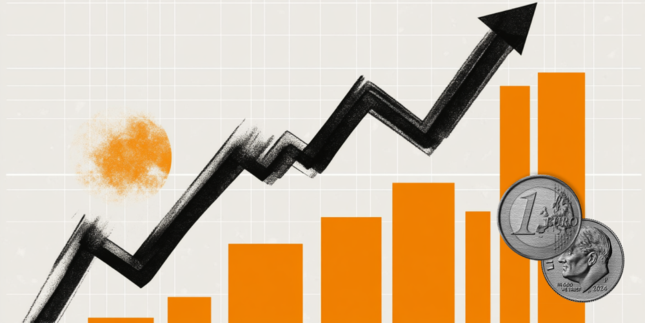- US Dollar declined after the Federal Reserve unexpectedly cut rates by 50 basis points to 4.75%-5.00%.
- Fed lowered its 2024 GDP growth forecast and raised its unemployment rate projections.
- Median projection for the Fed funds rate is revised down to 2.9% for the end of 2027.
The US Dollar Index DXY which measures the value of the USD against a basket of currencies tumbled to its lowest point since July 2023 after the Federal Reserve (Fed) unexpectedly implemented a significant 50 basis point (bps) reduction in interest rates. This move lowered the target range for the federal funds rate to 4.75%-5.00%. The Fed's decision signaled a shift in its monetary policy stance and sent shockwaves through the market, leading to a decline in the value of the US Dollar.
The USD may witness further declines due to the Federal Reserve's readiness to implement additional interest rate cuts. This anticipation arises from the Fed's shift in stance, indicating that it is prepared to take more aggressive action if economic conditions warrant it.
Daily digest market movers: US Dollar declines on Fed's unexpected 50 bps rate cut
- The Federal Reserve unexpectedly cut rates by 50 basis points to 5%, marking a significant shift in monetary policy.
- Federal policymakers lowered their GDP growth forecast for 2024 to 2%, down from the previous estimate of 2.1%.
- The unemployment rate is projected to remain elevated at 4.4% by the end of 2024 and 2025, above the previous forecast of 4.2%.
- The median projection for the Fed funds rate at the end of 2027 is 2.9%.
- The Federal Reserve's median view for the funds rate at the end of 2024 is revised down to 4.4%, compared to the prior estimate of 5.1%.
- During the presser, Federal Reserve Chairman Jerome Powell expressed confidence in the inflation outlook and the balance of risks.
- He also stated that the bank will move slower or faster according to the incoming data.
DXY technical outlook: Selling pressure mounts, indicators deep in negative terrain
Technical analysis of the DXY index suggests a negative outlook, with indicators remaining in negative territory. In addition, the loss of the 20-day Simple Moving Average (SMA) indicates a fading buying momentum.
The Relative Strength Index (RSI) is pointing downwards and remains below 50, indicating bearish sentiment. The Moving Average Convergence Divergence (MACD) is printing lower green bars, further supporting the bearish trend. Supports are identified at 100.50, 100.30 and 100.00, while resistance levels lie at 101.00, 101.30 and 101.60.
Inflation FAQs
Inflation measures the rise in the price of a representative basket of goods and services. Headline inflation is usually expressed as a percentage change on a month-on-month (MoM) and year-on-year (YoY) basis. Core inflation excludes more volatile elements such as food and fuel which can fluctuate because of geopolitical and seasonal factors. Core inflation is the figure economists focus on and is the level targeted by central banks, which are mandated to keep inflation at a manageable level, usually around 2%.
The Consumer Price Index (CPI) measures the change in prices of a basket of goods and services over a period of time. It is usually expressed as a percentage change on a month-on-month (MoM) and year-on-year (YoY) basis. Core CPI is the figure targeted by central banks as it excludes volatile food and fuel inputs. When Core CPI rises above 2% it usually results in higher interest rates and vice versa when it falls below 2%. Since higher interest rates are positive for a currency, higher inflation usually results in a stronger currency. The opposite is true when inflation falls.
Although it may seem counter-intuitive, high inflation in a country pushes up the value of its currency and vice versa for lower inflation. This is because the central bank will normally raise interest rates to combat the higher inflation, which attract more global capital inflows from investors looking for a lucrative place to park their money.
Formerly, Gold was the asset investors turned to in times of high inflation because it preserved its value, and whilst investors will often still buy Gold for its safe-haven properties in times of extreme market turmoil, this is not the case most of the time. This is because when inflation is high, central banks will put up interest rates to combat it. Higher interest rates are negative for Gold because they increase the opportunity-cost of holding Gold vis-a-vis an interest-bearing asset or placing the money in a cash deposit account. On the flipside, lower inflation tends to be positive for Gold as it brings interest rates down, making the bright metal a more viable investment alternative.
Information on these pages contains forward-looking statements that involve risks and uncertainties. Markets and instruments profiled on this page are for informational purposes only and should not in any way come across as a recommendation to buy or sell in these assets. You should do your own thorough research before making any investment decisions. FXStreet does not in any way guarantee that this information is free from mistakes, errors, or material misstatements. It also does not guarantee that this information is of a timely nature. Investing in Open Markets involves a great deal of risk, including the loss of all or a portion of your investment, as well as emotional distress. All risks, losses and costs associated with investing, including total loss of principal, are your responsibility. The views and opinions expressed in this article are those of the authors and do not necessarily reflect the official policy or position of FXStreet nor its advertisers. The author will not be held responsible for information that is found at the end of links posted on this page.
If not otherwise explicitly mentioned in the body of the article, at the time of writing, the author has no position in any stock mentioned in this article and no business relationship with any company mentioned. The author has not received compensation for writing this article, other than from FXStreet.
FXStreet and the author do not provide personalized recommendations. The author makes no representations as to the accuracy, completeness, or suitability of this information. FXStreet and the author will not be liable for any errors, omissions or any losses, injuries or damages arising from this information and its display or use. Errors and omissions excepted.
The author and FXStreet are not registered investment advisors and nothing in this article is intended to be investment advice.
Recommended content
Editors’ Picks

EUR/USD stabilizes above 1.1350 on Easter Friday
EUR/USD enters a consolidation phase above 1.1350 on Friday as the trading action remains subdued, with major markets remaining closed in observance of the Easter Holiday. On Thursday, the European Central Bank (ECB) announced it cut key rates by 25 bps, as expected.

GBP/USD fluctuates below 1.3300, looks to post weekly gains
After setting a new multi-month high near 1.3300 earlier in the week, GBP/USD trades in a narrow band at around 1.32700 on Friday and remains on track to end the week in positive territory. Markets turn quiet on Friday as trading conditions thin out on Easter Holiday.

Gold ends week with impressive gains above $3,300
Gold retreated slightly from the all-time high it touched at $3,357 early Thursday but still gained more than 2% for the week after settling at $3,327. The uncertainty surrounding US-China trade relations caused markets to adopt a cautious stance, boosting safe-haven demand for Gold.

How SEC-Ripple case and ETF prospects could shape XRP’s future
Ripple consolidated above the pivotal $2.00 level while trading at $2.05 at the time of writing on Friday, reflecting neutral sentiment across the crypto market.

Future-proofing portfolios: A playbook for tariff and recession risks
It does seem like we will be talking tariffs for a while. And if tariffs stay — in some shape or form — even after negotiations, we’ll likely be talking about recession too. Higher input costs, persistent inflation, and tighter monetary policy are already weighing on global growth.

The Best brokers to trade EUR/USD
SPONSORED Discover the top brokers for trading EUR/USD in 2025. Our list features brokers with competitive spreads, fast execution, and powerful platforms. Whether you're a beginner or an expert, find the right partner to navigate the dynamic Forex market.



